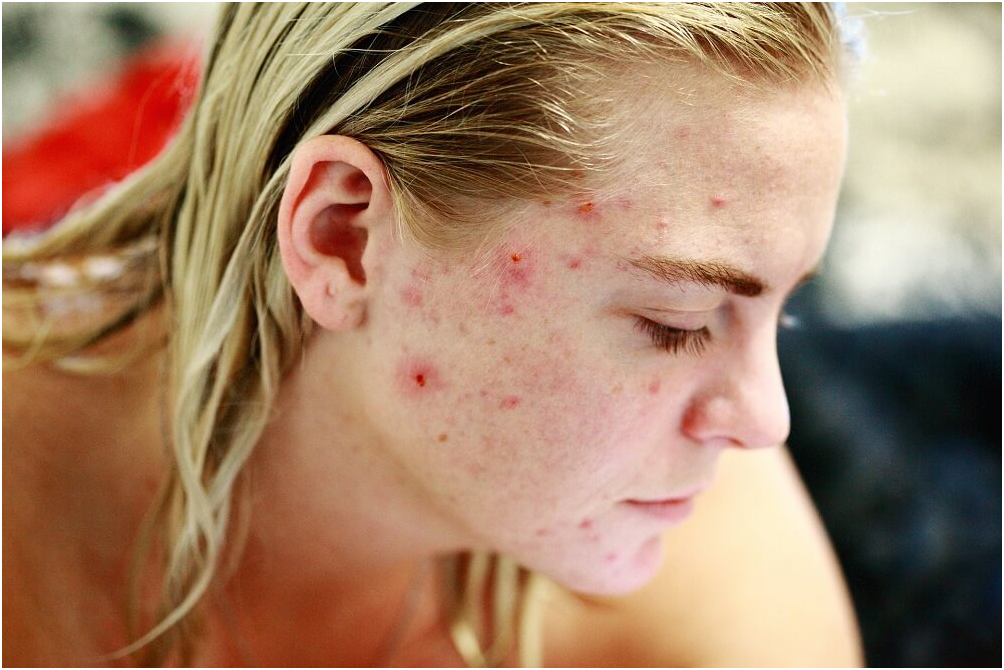Share

GUIDE TO TREATING ACNE SCARS AND SKIN DAMAGE
By Victoria Healthcare 12 April 2019

Your doctor will examine you and suggest a treatment plan. Her recommendations will depend on the type of damage to your skin and how serious it is.
Acne leaves three major types of scars:
- Ice pick: deep but small pits
- Boxcar: sharp angles and edges; can be shallow or deep
- Rolling: tend to be wide and shallow (a wavy look) caused by damage under the surface
How to Treat Scars
You may need more than one kind of treatment to smooth your skin. Most are done in the doctor’s office or as an outpatient procedure at the hospital.
Skin resurfacing. The goal is to remove damaged layers of skin so that new, healthy skin appears. There are three major ways your doctor can do this:
- Laser. A laser creates a more even surface to your skin.
- Dermabrasion. A rapidly spinning wheel with a rough surface removes damaged skin.
- Chemical peel. A special type of acid removes the top layer of your skin. This can help with deeper scars.
New skin will begin to form about 7 to 10 days after resurfacing. The area may stay pink from several weeks to several months.
Fillers. Your doctor puts a filler (collagen or fat) into the damaged area with a needle. It puffs up the skin under the scar to help smooth it out. Because your body slowly absorbs the filler, the process needs to be repeated from time to time.
Rolling (or needling). The doctor rolls a device covered in tiny needles over your skin. It’s a safe way to stimulate the tissue under it to grow. You may have to do it several times.

Surgery. Some people need an operation to remove bad acne scars or cysts. Your doctor cuts away or loosens the scars. The area is then repaired with stitches or a skin graft (skin from another area of the body).
Tips for Preventing Acne
- Keep your face clean
Whether or not you have acne, it's important to wash your face twice daily to remove impurities, dead skin cells, and extra oil from your skin's surface. Washing more often than twice daily is not necessarily better; it may do more harm than good. Use warm, not hot, water and a mild facial cleanser. Using a harsh soap (like deodorant body soap or scrubs) can hurt already inflamed skin and cause more irritation.
Avoid scrubbing your skin harshly with a washcloth, an exfoliating glove, or loofah (a coarse-textured sponge). Gently wash it with a very soft cloth or your hands. Always rinse well, and then dry your face with a clean towel. (Toss the towel in the laundry hamper, as dirty towels spread bacteria.) Also, use the washcloth only once.
- Moisturize
Many acne products contain ingredients that dry the skin, so always use a moisturizer that minimizes dryness and skin peeling. Look for "noncomedogenic" on the label, which means it should not cause acne. There are moisturizers made for oily, dry, or combination skin.

- Try an over-the-counter acne product
These acne products don't need a prescription. Most of them have ingredients such as benzoyl peroxide, salicylic acid, glycolic acid, or lactic acid, which curb bacteria and dry your skin. They may cause drying or peeling so start with a small amount at first. Then you can adjust how much you use and how often. Another option is a new OTC topical retinoid gel (Differin 0.1% gel). It works to actually keep the acne from forming. Use these products with caution if you have sensitive skin.
- Use makeup sparingly
During a breakout, avoid wearing foundation, powder, or blush. If you do wear makeup, wash it off at the end of the day. If possible, choose oil-free cosmetics without added dyes and chemicals. Choose makeup that is labeled as noncomedogenic. Read the ingredients list on the product label before buying.
- Watch what you put on your hair
Avoid using fragrances, oils, pomades, or gels on your hair. If they get on your face, they can block your skin's pores and irritate your skin. Use a gentle shampoo and conditioner. Oily hair can add to the oil on your face, so wash your hair often, especially if you're breaking out. Got long hair? Keep it pulled away from your face.
- Keep your hands off your face
Avoid touching your face or propping your cheek or chin on your hands. Not only can you spread bacteria, you can also irritate the already inflamed facial skin. Never pick or pop pimples with your fingers, as it can lead to infection and scarring.
- Stay out of the sun
The sun's ultraviolet rays can increase inflammation and redness, and can cause post-inflammatory hyperpigmentation (dark discoloration). Some acne medications may make your skin more sensitive to sunlight. Limit your time in the sun, especially between the hours of 10 a.m. and 4 p.m., and wear protective clothing, such as a long-sleeved shirt, pants, and a broad-brimmed hat. Whether you have pimples or not, always apply a broad-spectrum sunscreen with 6% zinc oxide or higher and SPF 30 or higher at least 20 minutes before sun exposure. Look for noncomedogenic on the sunscreen label to make new pimples less likely. Read the ingredients on the product label to know what you're putting on your skin.
- Feed your skin
Most experts agree that certain foods, like chocolate, don't cause pimples. Still, it makes sense to avoid greasy food and junk food and add more fresh fruits, vegetables and whole grains to your diet. Dairy products and foods high in processed sugar may trigger acne. Avoid these.
9. Chill!
Some studies link stress with the severity of pimples or acne. Ask yourself what's making you feel stressed. Then look for solutions.
When in doubt, check with a dermatologist to see if you need more treatment to prevent or stop acne.


